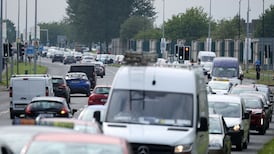Part of the main Dublin-Belfast road has become a notorious blackspot for road fatalities, writes Edward Power.
When Bill Clinton became the first person to drive down the newly-opened Dunleer bypass in October 2000, few imagined this innocuous stretch of motorway would become one of the Republic's most infamous accident blackspots.
Yet in less than two years at least 10 motorists have been killed along the 17km segment of the M1.
The first tragedy occurred just weeks after the US President's journey. In October 2000 a woman in her 40s died in a collision with a lorry.
Two months later a young couple were killed in a pile-up going to Dublin Airport. They had been due to fly to Australia, where they were planning to begin a new life together.
In March 2001 a young man died when his car crashed into a truck. Nine people, including four children, suffered serious injuries in a four-car pile-up in July 2001.
Such was the scale of serious accidents that the bypass, constructed over three years at a cost of €150 million, was singled out by officers leading the Garda's Operation Lifesaver road safety campaign. A network of fixed CCTV cameras was mounted along the route in an attempt to curb speeding.
The twisted bodies of crashed cars were erected along its grass margins, chilling reminders of the consequences of irresponsible driving. But despite this and other initiatives, the motorway continues to claim lives.
The N1, which incorporates the M1 and the Dunleer bypass, was the scene of nine deaths in 2000 and eight in 1999, according to the National Roads Authority. The number of non-fatal accidents - 89 in 2000 and 128 in 1999 - is also a source of concern.
However, the NRA insists the N1, linking Dublin to Belfast, is among the safest routes in the Republic. Last night its spokesman, Mr Michael Egan, said 65 per cent fewer accidents occurred on the State's motorways and dual carriageways than on older roads.
However, successive safety campaigns have failed to appreciably reduce motor deaths in Co Louth.
Of the 246 road fatalities recorded this year, 15 occurred in Co Louth.
In June, Trinity College researchers concluded that while Operation Lifesaver was responsible for an 18 per cent reduction in serious injuries in the area, it had done little to arrest the rising death toll.







